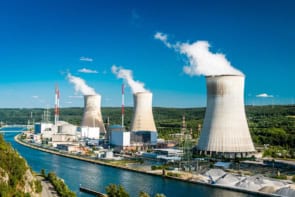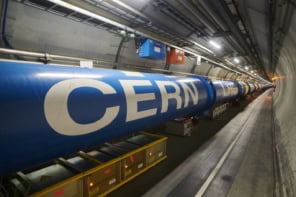
Governments around the globe are planning to review their nuclear programmes in light of the ongoing crisis at the Fukushima Daiichi nuclear-power plant. The situation follows the 8.9 magnitude earthquake (on the Richter scale) and subsequent tsunami that struck Japan last Friday, leaving thousands dead and causing significant damage to the nation’s infrastructure. Today, Japanese authorities have upgraded the emergency at Fukushima from four to five on a seven-point scale, placing it on a par with 1979’s Three Mile Island accident in the US.
Early reports suggest that the emergency at Fukushima stemmed from a failure of cooling systems associated with the plant’s six reactors. When the earthquake struck, damage to power supplies meant that cooling water could no longer be circulated within the reactor core, causing fuel rods to overheat and their metal casings to partially melt. This released chemicals that reacted with water vapour to produce hydrogen, which escaped and exploded, damaging the reactor buildings.
As an emergency response, Japanese authorities drenched the reactor compound with seawater but there are still fears that further explosions could release dangerous levels of radioactive substances into the local environment. On Tuesday the UK government’s chief scientific officer John Beddington responded to concerns that the Japanese authorities were unwilling to release information about the developing emergency. “What they’re putting out is pretty comprehensive and it’s going to the appropriate international organizations,” he told the British embassy in Toyko. “In fact we are getting information through the international energy agencies and we do have pretty detailed knowledge of what these plants are like.”
Safety reviews
However, the UK government has already commissioned its nuclear inspector, Mike Weightman, to conduct a review into the implications of events at Japanese nuclear reactors on existing and new plants in the UK. An interim report is expected by mid-May and a final report within six months. “Safety is and will continue to be the number one priority for existing nuclear sites and for any new power stations. I want to ensure that any lessons learned from Mike Weightman’s report are applied to the UK’s new-build programme,” says Chris Huhne, the UK energy secretary.
When we see a crisis like the one in Japan, we have a responsibility to learn from this event, and to draw from those lessons to ensure the safety and security of our people Barack Obama
Germany has taken its seven oldest reactors offline until at least June and put on hold plans to extend their lives. While France, the number two producer of nuclear power behind the US, has announced that it will conduct tests on security systems at the country’s 58 nuclear reactors, and the results would be made public. President Barack Obama has also requested a comprehensive review of US nuclear facilities, which will be carried out by the US nuclear regulatory commission. Announcing the review during a speech to journalists at the White House, Obama also restated his support for nuclear power.
“Here at home, nuclear power is an important part of our own energy future, along with renewable sources like wind, solar, natural gas and clean coal,” said Obama. “But when we see a crisis like the one in Japan, we have a responsibility to learn from this event, and to draw from those lessons to ensure the safety and security of our people.” India, China and Pakistan also intend to conduct reviews of their nuclear safety.
Infrastructure damage
The earthquake and tsunami have also affected some of Japan’s major scientific facilities, although the country’s strict building codes managed to restrict major damage. A preliminary inspection of the massive new $1.5bn Japan Proton Accelerator Research Complex (J-PARC), which lies around 200 km south of the region hit worst by the quake, revealed it had come off relatively unscathed, although at the lab’s neutron spallation source, the mercury target used to produce neutrons had moved around 30 cm. It is expected to take more than six months for the source to return to normal. “We are confident to recover the machine within reasonable time,” says J-PARC director Shoji Nagamiya.
Not so fortunate, however, is the Photon Factory experiment, a national synchrotron radiation facility based at the KEK particle-physics lab in Tsukuba, some 50 km north-east of Tokyo. The experiment’s director, Soichi Wakatsuki has reported that the facility’s linear accelerator has suffered “substantial damages”, including the displacement of three radio frequency modules by about 10 cm and one magnet that fell onto the floor.



